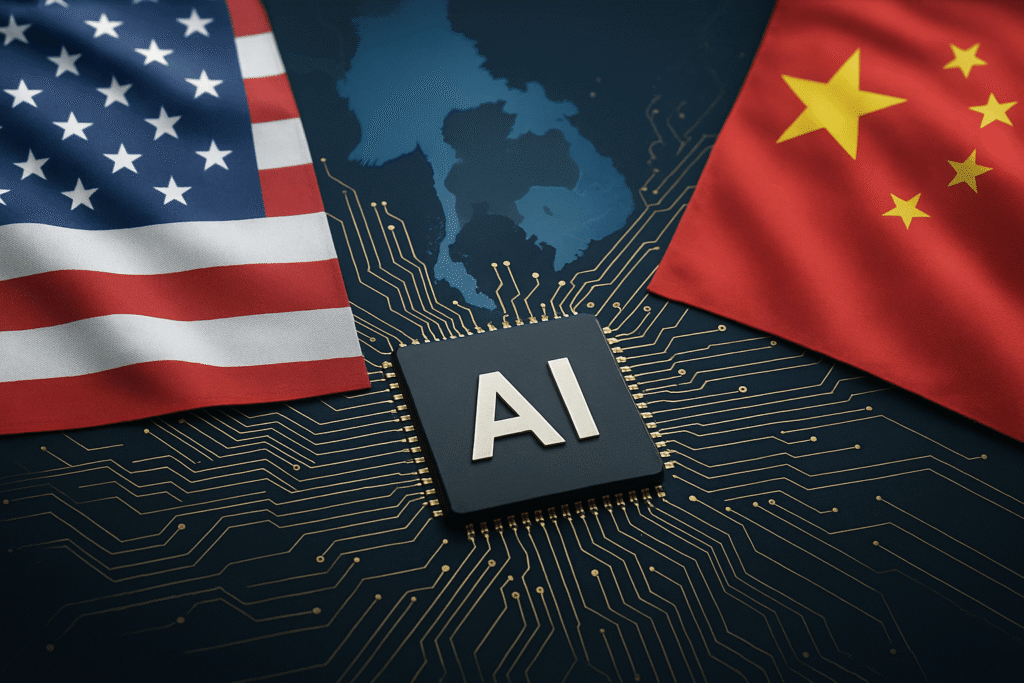In a major escalation of tech-related national security measures, the U.S. government has unveiled a sweeping expansion of AI chip export controls in 2025, with new licensing requirements aimed at curbing China’s indirect access to American-designed semiconductors.
The Bureau of Industry and Security (BIS), an agency under the Department of Commerce, is preparing to enforce new rules that extend restrictions not only on China directly but also on transit points like Malaysia and Thailand—two critical hubs in the global electronics supply chain. The move is part of a broader strategic crackdown to prevent high-performance chips, such as those designed by Nvidia and AMD, from being rerouted to China through third-party nations.
Why the U.S. Is Expanding AI Chip Export Controls in 2025

This latest policy shift comes amid growing concerns that previous export controls were insufficient in stopping China from advancing its AI capabilities especially in areas tied to surveillance, cybersecurity, and military applications.
“This is about national security, supply-chain integrity, and staying ahead in the AI race,” said a Commerce Department official, emphasizing the urgency of tightening loopholes in global chip distribution.
The U.S. AI chip export controls in 2025 replace the earlier Biden-era “AI Diffusion Rule,” which had broader but less targeted restrictions. In contrast, the new measures take a more surgical, country-specific approach. Exporters will now need special licenses to ship high-end chips to Southeast Asian nations seen as vulnerable to transshipment schemes.
Impact on Nvidia, AMD, and the Global Chip Industry
Following the announcement, Nvidia’s stock slipped 1.2%, reflecting investor anxiety over potential disruptions to revenue and global logistics. The company, which leads in AI GPU design, has previously criticized such restrictions as counterproductive.
Nvidia CEO Jensen Huang warned, “These policies risk accelerating Chinese innovation rather than stalling it.”
Others in the tech sector, including former national security advisors, have echoed this sentiment—cautioning that overly aggressive controls could harm U.S. leadership while encouraging adversaries to double down on domestic chip development.
Malaysia and Thailand Now in the Crosshairs
The decision to include Malaysia and Thailand under the expanded control list signals a sharp recalibration in how the U.S. views its strategic partners in Asia. While not directly accused of wrongdoing, these nations are home to several major chip packaging and testing facilities that China could potentially exploit.
“We’re not targeting these countries we’re protecting the integrity of our technology,” the BIS noted.
This will likely lead to stricter customs checks, delayed shipments, and increased compliance costs for chipmakers who rely on global manufacturing and distribution networks.
What the New AI Chip Export Controls Mean for China

For Beijing, the message is clear: the U.S. will no longer tolerate indirect pathways that allow advanced AI chips to power Chinese military or surveillance tech. In response, analysts expect China to accelerate its efforts in homegrown semiconductor R&D, pouring billions into alternatives to U.S.-based chip technologies.
“The U.S. is building firewalls around its AI intellectual property,” said a senior analyst at GlobalTech Insights.
However, with Chinese AI models already trailing U.S. counterparts by only 3–6 months, some fear these controls may trigger an innovation race rather than a slowdown.
